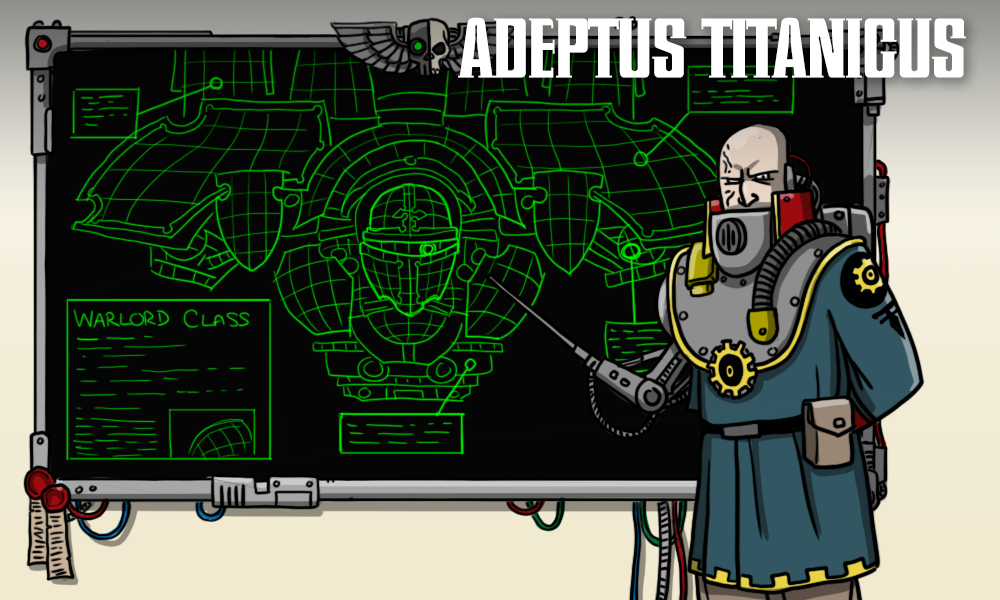Adeptus Titanicus is a game with a ton of different options. But we’re here today to talk about one that’s near and dear to Condit’s heart: Melee weapons. They’re not the easiest weapons to use, but the reward can be worth it. Read on to learn how to get the most out of dedicated close combat weaponry.
Why bother with melee?
You’ve got volcano cannons, missile launchers, plasma blastguns, and more, not to mention psychic powers – why would you want to punch another Titan?
Because it’s fucking rad, that’s why.
In all seriousness, melee weapons and smash attacks are fairly strong – your weakest option here comes in at d3 attacks at strength 7, with your more reliable options running the gamut from strength 8 up to an impressive strength 12. They’re also more reliable once you manage to make contact, letting you make targeted attacks without penalty, which is effectively a +1 to hit compared to ranged weapons. This only gets better when you look at the melee weapons currently in the game, all of which offer at least a +1 to hit, letting you call your shot into a damaged area at 3+ at the worst, and more often than not at 2+. Oh, and you don’t have to worry about stripping void shields first either, just go straight in for the damage.
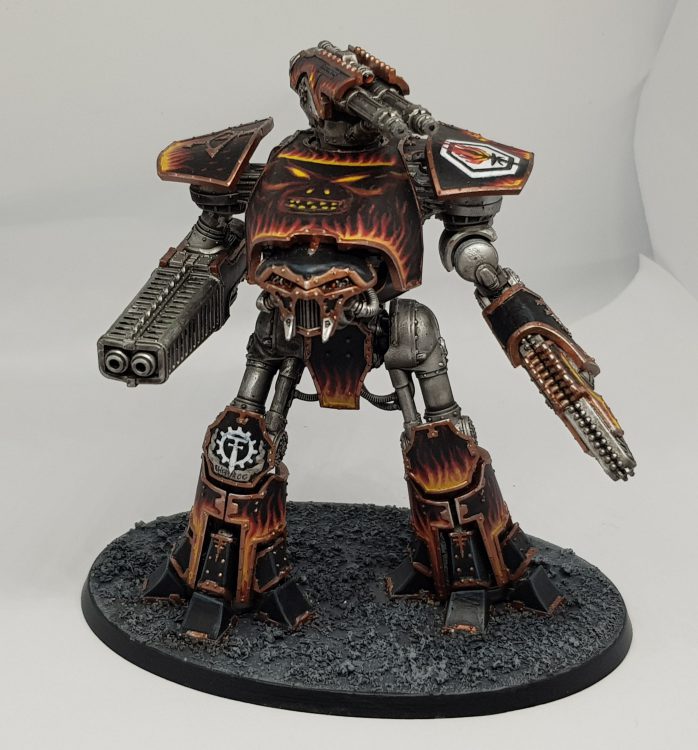
Add to this the bonus attacks from charging and you’ve got incredibly reliable finishers. Got an enemy about 8-10” away from a Reaver that’s taken some hit to one of its tracks? If that Reaver has a chainfist or power fist, you can charge it and have a serious chance of killing it.
Another thing that may not be immediately obvious is how powerful Charge orders can be even before you factor in the extra dice. Like First Fire orders, charging gives you a way to attack in the Movement phase, which is very useful. Unlike First Fire, you still get to move, and it’s a lot more likely to result in an engine kill before your opponent is allowed to return fire.
The Problems
While close-ranged attacks are powerful, there are a few downsides you have to get around. Two of these are very obvious: first, you use your WS instead of BS, which is worse for all Titans, meaning you’re less accurate than you otherwise would be. Second, you have to get across the table, which can often be easier said than done.
Those aren’t your only problems, though. While your attacks will ignore your opponents’ voids, if your opponent is within 2” of your weapons, then you’re by definition within 2” of theirs, which means you’re going to take any incoming fire directly to armor, even if you still have voids up. Not an issue if you can get the kill on the Charge order, but if it even scrapes by and you don’t have the first activation in the Combat phase that can be devastating depending on the situation.
Bair: A go-to strategy of mine if I’m stuck within 2” of a melee weapon Titan and get to shoot first is to knock the melee weapon offline before it can cause serious hurt.
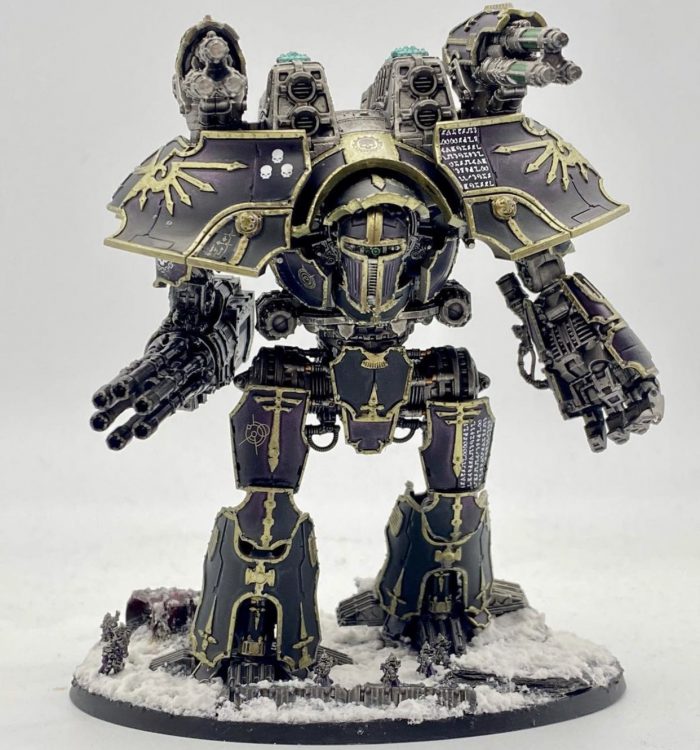
Being at close range also means that you’re at risk of being damaged yourself if your opponent rolls high on the Catastrophic Damage table. Be particularly careful against legions like Fortidus and Tempestus who have ways to improve the chances of damaging you when they die, as you’re much more likely to suffer damage when they use those abilities.
Perhaps more pressing is how reliant on orders you are. Without reliable access to Charge orders, melee weapons lose a lot of their potential power, and taking away Full Stride means it’s going to take you that much longer to get across the table. I don’t know how many games I’ve wound up on the back foot due to rolling a single 1 when trying to issue an order – it can cause you to completely lose all of your momentum right then and there.
Finally, the power of a melee-focused force drops off significantly if you don’t have the initiative. You need to be able to make the first move and get the charge to take engagements on your terms due to the short range.
The Solutions
In order to make melee work, you need to improve the reliability in some way. The fact that melee attacks are, by definition, within 2” of the opponent means you’re using WS rather than BS. As a result, most close-range attacks will be less effective than they would otherwise. Improving accuracy, whether by adding a bonus to hit or by getting some form of re-rolls you can lean on, is one way to get around this; increasing the number of attacks is another. At the end of the day, you’re looking to be able to get at least 3 hits through to armor consistently on a long charge. If you can do that and connect at strength 8 or higher, you’ll be able to threaten just about anything.
You also need to have a delivery plan – you’ve got a nasty weapon, so how are you going to get it there? Warlords move a maximum of 6” per turn without some sort of shenanigans, while Reavers can move up to 9”. That means you’ve got an effective range of 8” with a power claw or 11” with a chainfist or power fist on a Reaver if you charge and push for movement. Most lists will work through this with some combination of Full Stride orders, pushing for Power to Locomotors, and stratagems in the early game, setting you up for decisive charges in rounds 3 or 4 (maybe turn 2 if the enemy is also moving at you, for some reason).

Speaking of Stratagems, the clear winners for Charging are the Traitors, with the Unbridled Hatred allegiance trait giving a Titan once per game 2” extra movement and +1A with all melee weapons for the entire turn this makes any charge more devastating, and more likely to happen. But the Traitors also have access to War Lust, giving an extra 2” to the booster movement value of all friendly Titans and +2 to issuing Full Stride orders, make use of this turn 1 so that you’re moving your Reavers 22” turn 1 down the field. Then for the big charge turn there’s Bloodlust which gives +2 to the roll for issuing Charge Orders as well as a +2 to hit bonus when attacking enemy units within 2” making not only melee attacks far more reliable but also Smash attacks and all ranged attacks while still making targeted attacks.
Loyalists aren’t completely left out of the action, as they have several stratagems which improve their command checks and combat effectiveness such as Iron Resolve to auto pass an order after failing the command check and Great Crusade Titans which effectively adds 2 extra attacks on all charge orders for the turn its used, making the Titans count as having moved 6″ more than they actually did giving Chainfists a minimum 5 attacks plus the distance they actually travelled.
Bair: Something fun to do with Gryphonicus is to use Reckless Maverick while on a Charge order to be able to get into position and then make a charge move, or if possible then being able to make 2 Charge attacks in the movement phase.
As part of that plan, you need to have a solid working knowledge of the movement rules, especially on the charge. One of the biggest things new players miss in AT is that the Charge order only stops Titans from turning after they start to move – it doesn’t stop them from moving freely within their front arc or turning on the spot before moving. What this means is that you can turn before your move, start moving in one direction, then complete your move in another direction so long as you’re moving within your front arc and don’t make any turns once you start moving. You can use this to step around screening units, charge out from behind a building, or any number of other shenanigans.
Speaking of buildings, don’t be afraid to hide behind cover on your way in. If you’re looking to get a decisive charge off, you need to keep the engine alive until you can make it there. Take advantage of the terrain and make judicious use of Emergency Repairs to cross the board while keeping your voids up.
Condit: I regularly run power claw-equipped Warlords, and one of the biggest things that has improved their effectiveness is not being afraid to issue Emergency Repairs in the Strategy phase, then push for movement in the Movement phase. The temptation is always there to stand and shoot, but since you’ve only got two guns you might as well push forward.
There’s one final thing you need to play around: Vox Blackout. Close-combat lists live and die on their orders, and a canny opponent will save Vox Blackout for the turn when it looks most like you’re going to charge them. There are a few ways to get around this, either by setting it up so there’s not a singular decisive turn in which charge orders are necessary, or by just being threatening enough in the Combat phase to where you can push in and still get the kill.
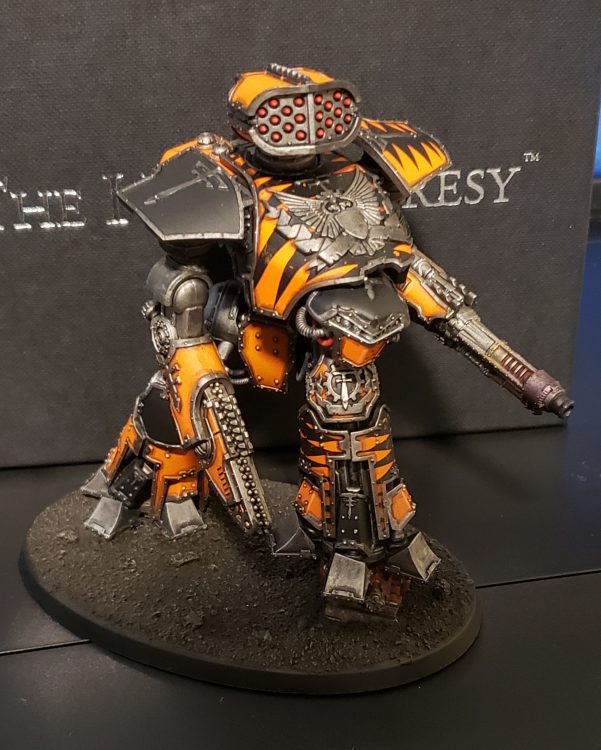
It’s easy to see, then, why Legio Vulpa are the undisputed champs of CQC (Claw Quarters Combat) in Adeptus Titanicus. Honour and Blood improves their reliability, pushing Warhound and Reaver Smash attacks to 3+ and Warlord claws to 2+ to hit. Disruption Emitters stacks on top of this to make all of your attacks hit hard, pushing your Warhound’s Smash attack up to strength 9 and turning dedicated melee engines into blenders. Finally, while they don’t have any legio-specific stuff that helps them close the gap, declaring Traitor allegiance gives them access to a powerful allegiance ability and an incredible toolkit of stratagems that will help them get to where they want to be.
This also sheds some light on why I’m somewhat disappointed in Laniaskara as a dedicated melee force – rather than delivering a single powerful killshot once they make contact, they instead favor a high volume of attacks on the charge to pile as much damage as possible into a single location. This isn’t to say they’re bad – they can still be quite dangerous when played well. They just rely a bit more on shooting to set up the kill, so you’ll need to keep that in mind if you play them.
Punch Smarter; Punch Harder
So with all that in mind, how do you get the most out of your melee weapons? Broadly speaking, there are three ways to use them. First, you can use a chainfist as one of your finishers, charging in to follow up on damaged Titans that survive between rounds. Normally, a Titan that’s tracked but hasn’t taken any critical damage has a decent chance of surviving to attack the next round. A chainfist Reaver on Charge orders changes that calculus, letting you follow up on the previous round’s shooting to push your advantage and secure kills that would otherwise be out of reach. This is probably the most straightforward route, and is what you should be going for if you’re just trying to clean up some engine kills.
You can also build your list around melee damage as your primary method of scoring engine kills. This is a risky play, and we don’t recommend it to beginning players. However, if you want to give it a shot, you’ll need to lean in and make your charges as lethal as possible. Traitor legions are the most obvious choices here, with Vulpa, Magna, and Laniaskara being the standout choices, but between the allegiance trait and powerful suite of stratagems you can threaten serious damage with just about any legion other than Mordaxis. Don’t count the loyalists out, though – Gryphonicus can be an outright terror in close, and Honorum, Ignatum, and Astorum can all make aggressive use of melee weapons. Spend your stratagem points on tricks like War Lust (traitors) or Great Crusade Titans (loyalists) that will give you reliable orders and extra speed or attacks when you need them.
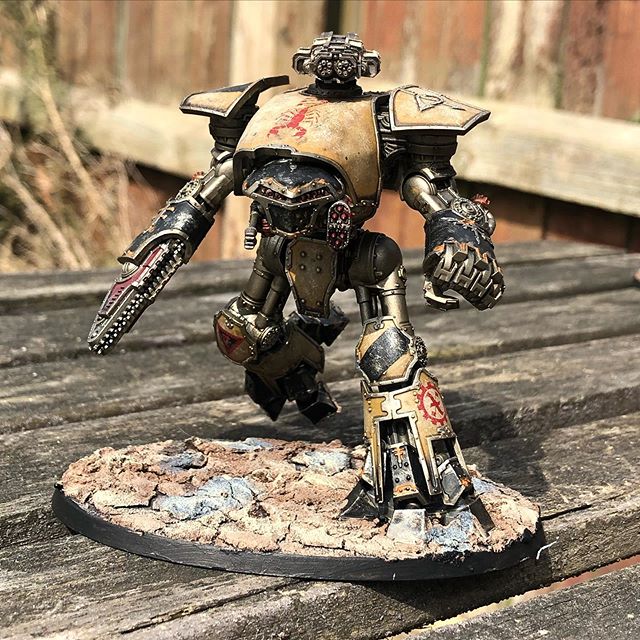
The third option is the one that isn’t necessarily obvious, but can be extremely useful for a lot of lists: using melee as an area denial tool. Melee weapons are powerful, and charges are extremely dangerous. This means there’s a psychological aspect in play that you shouldn’t ignore: give your Warlord with a power claw Charge orders and you’ve effectively created an 8” wide arc in front of your Warlord where your opponent can’t stand without being in serious danger, even at full voids. Not only that, but you still have the ability to reposition if they try to outflank you, often making this more flexible than going on First Fire. If you choose this approach, you need to be careful that you don’t overextend and leave gaps in your coverage for your opponent to slip through. This takes more measured and deliberate play, but can be very rewarding if you’re looking to screen for a dedicated fire-support Titan or two.
Bair: One of my best plays against Condit in recent memory was when we each had a section of board all on Charge orders, I had the first activation but instead of charging into the fray with a group of Lancers as he expected they made a hard left away from the fighting so they could spend the next turn getting to a backfield objective. He was so thrown by the lack of obvious charge he slipped up on his own Charge order and moved a Warhound right into range of a Chainfist Reaver which ended its life swiftly after.
Fight Fire With Fists
Melee weapons are a lot of fun to play, even if they can be difficult to get mileage out of. And while dedicated close-combat lists aren’t for everyone, nearly every list can benefit from at least one melee weapon to discourage aggressive play and punish overextensions. Plus, there’s nothing like the feeling of running a Warlord across the board and punching out an enemy Titan on the charge, then unloading on another enemy in the Combat phase.
